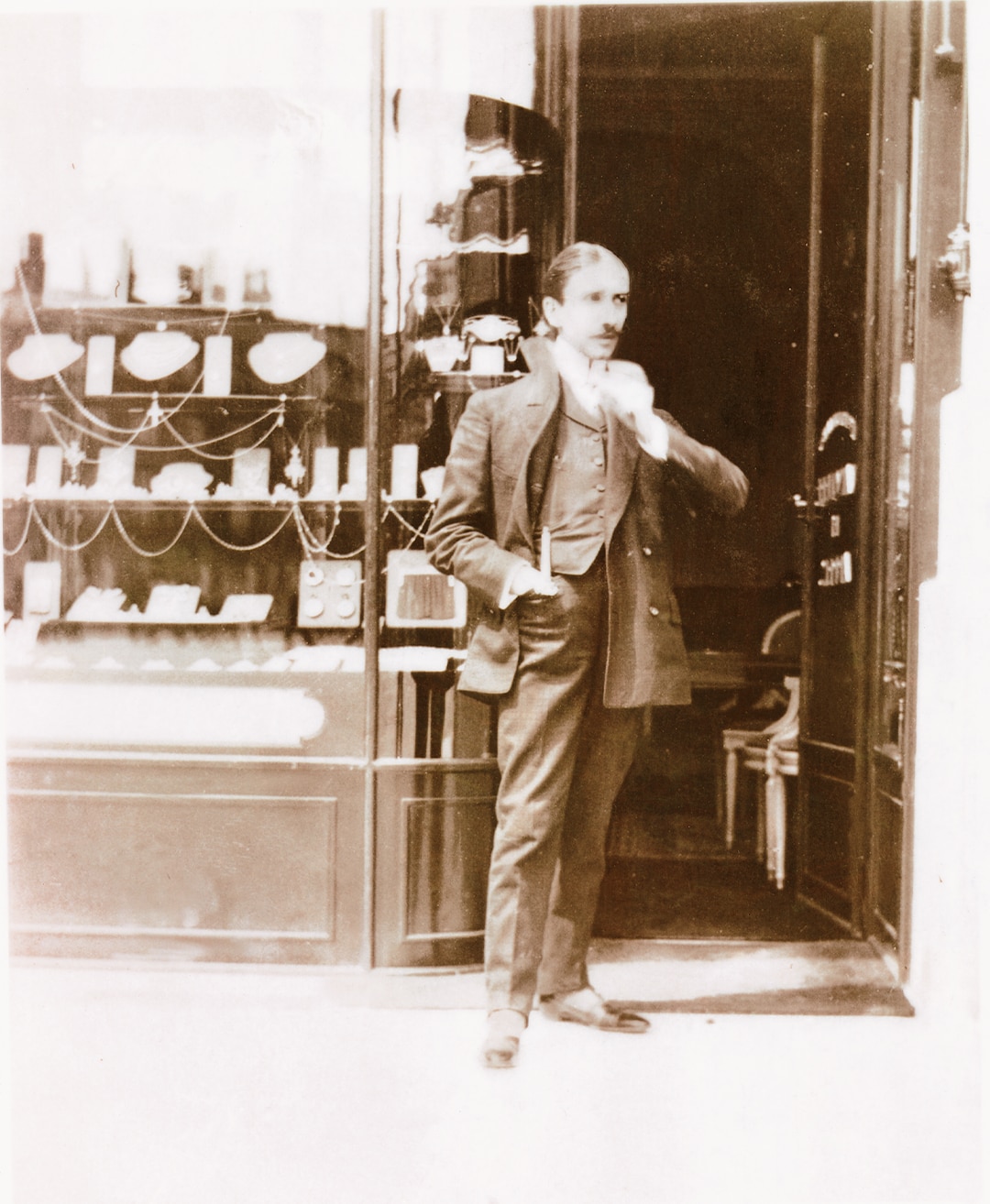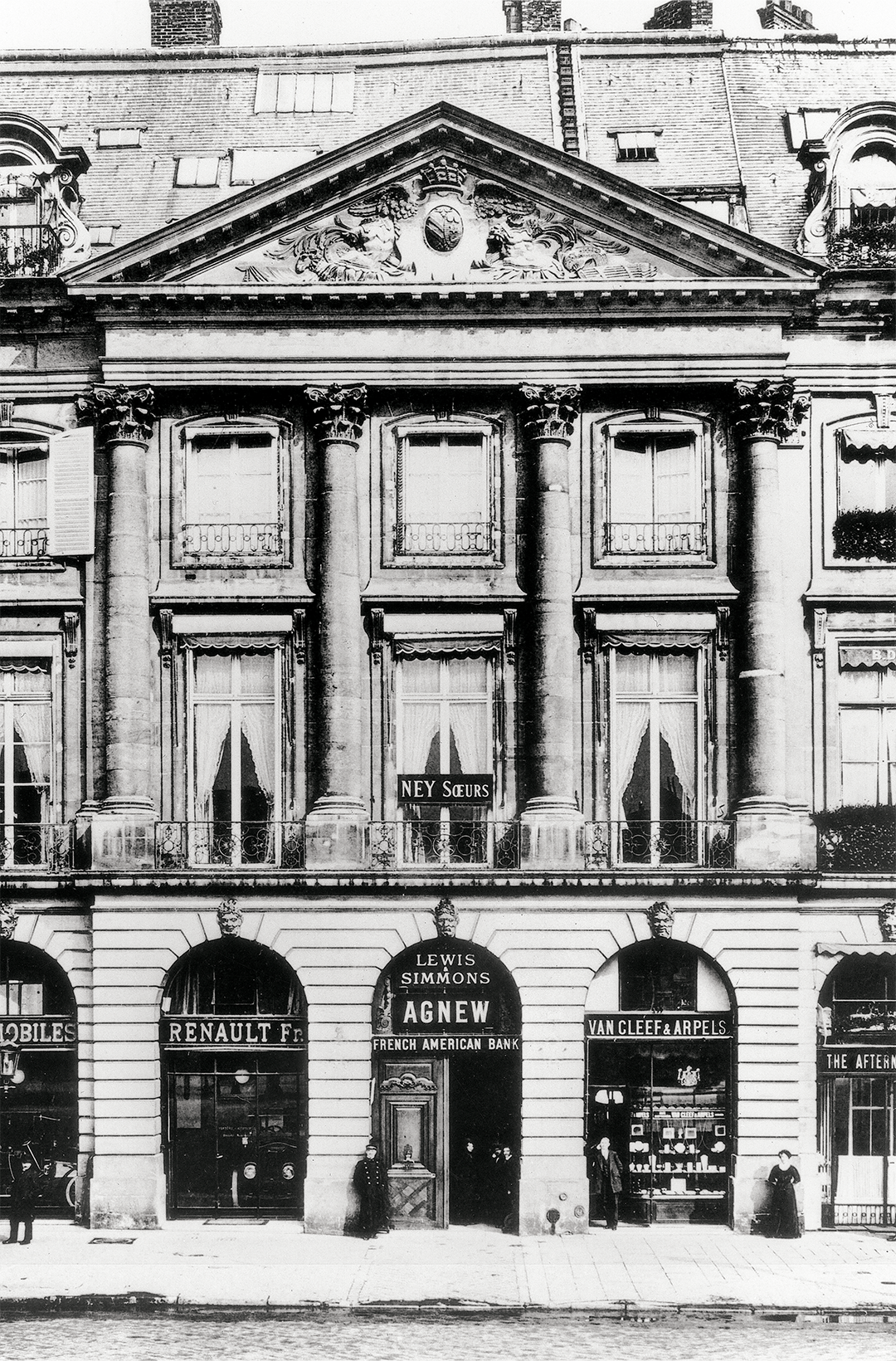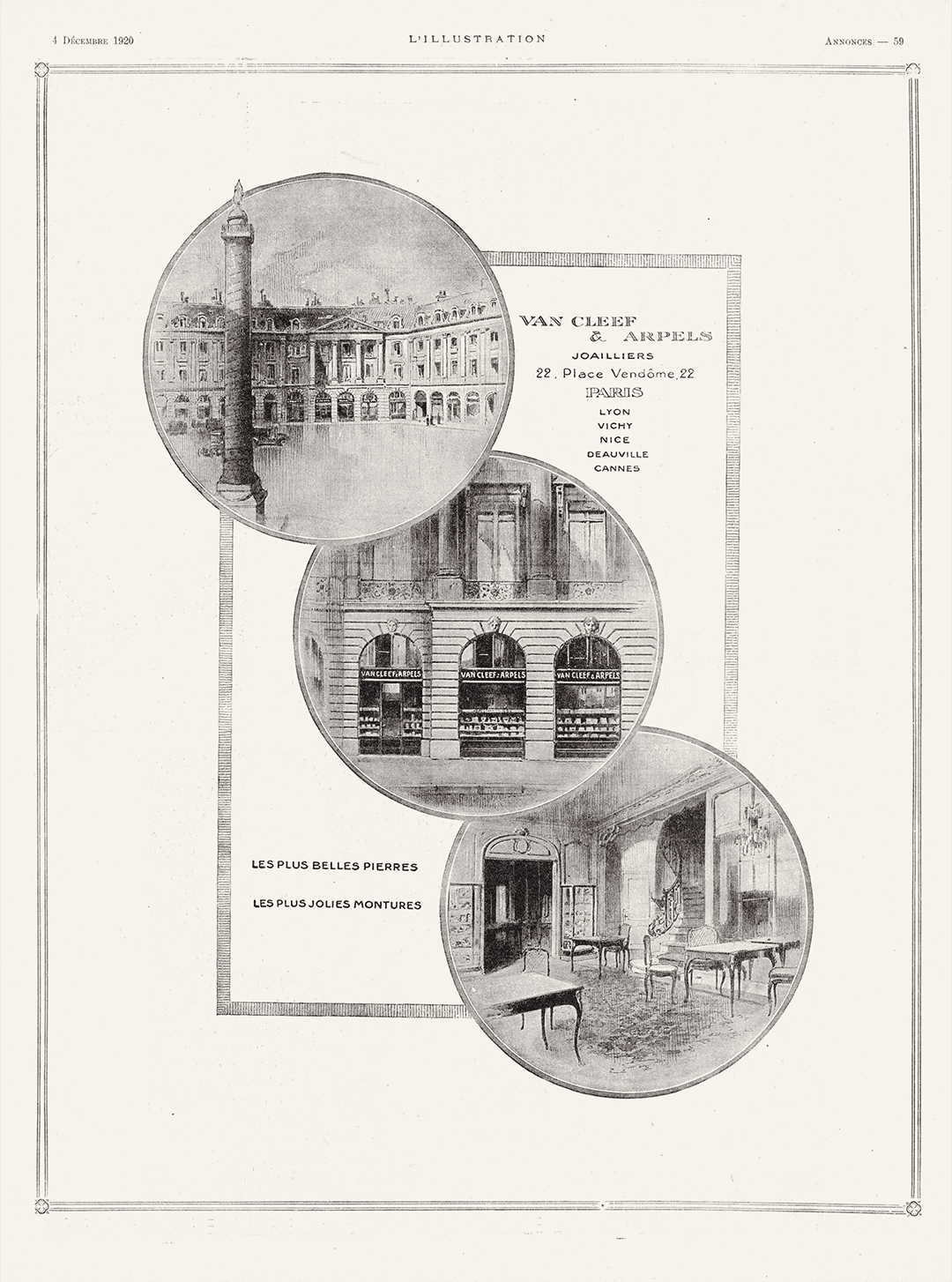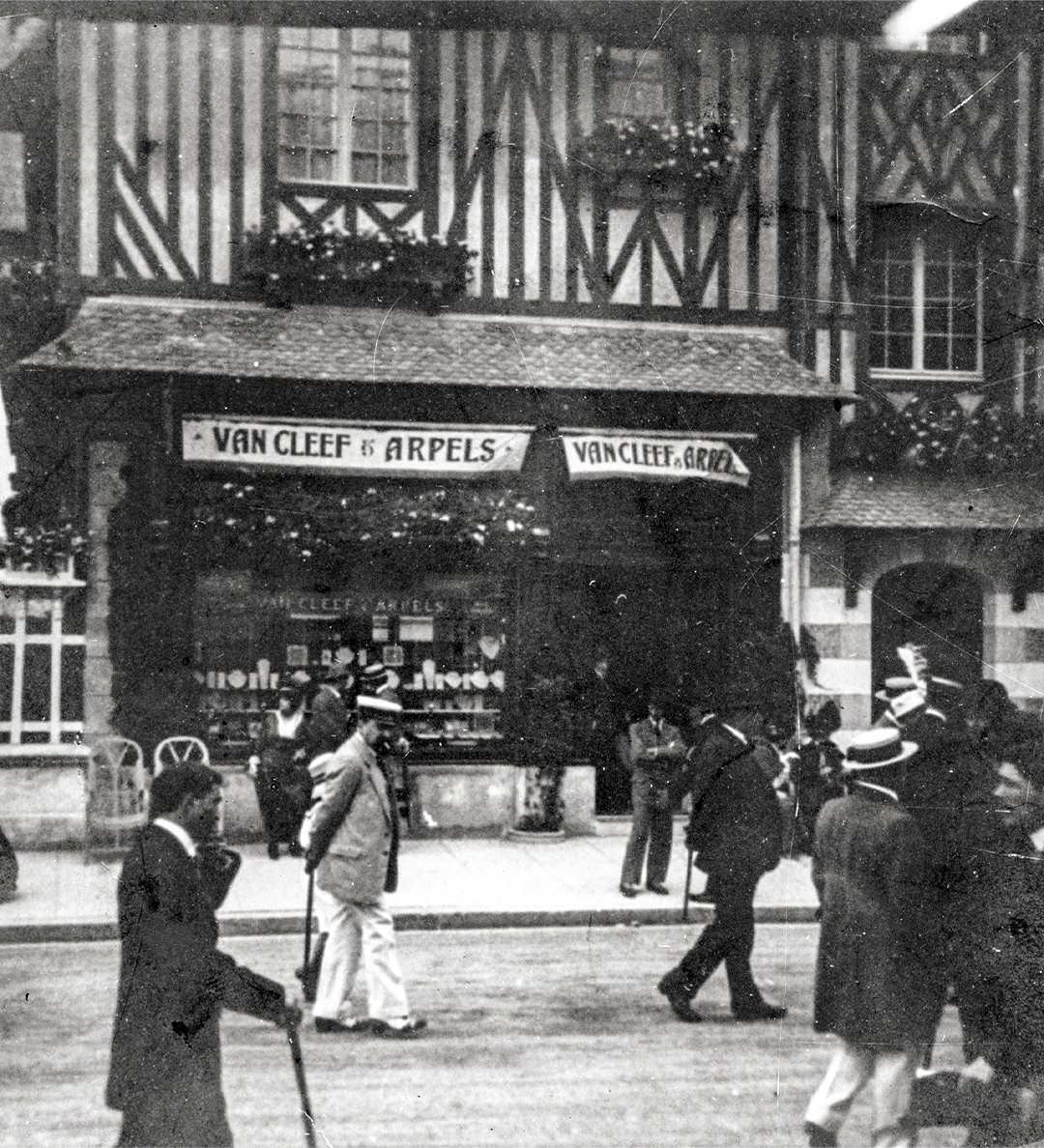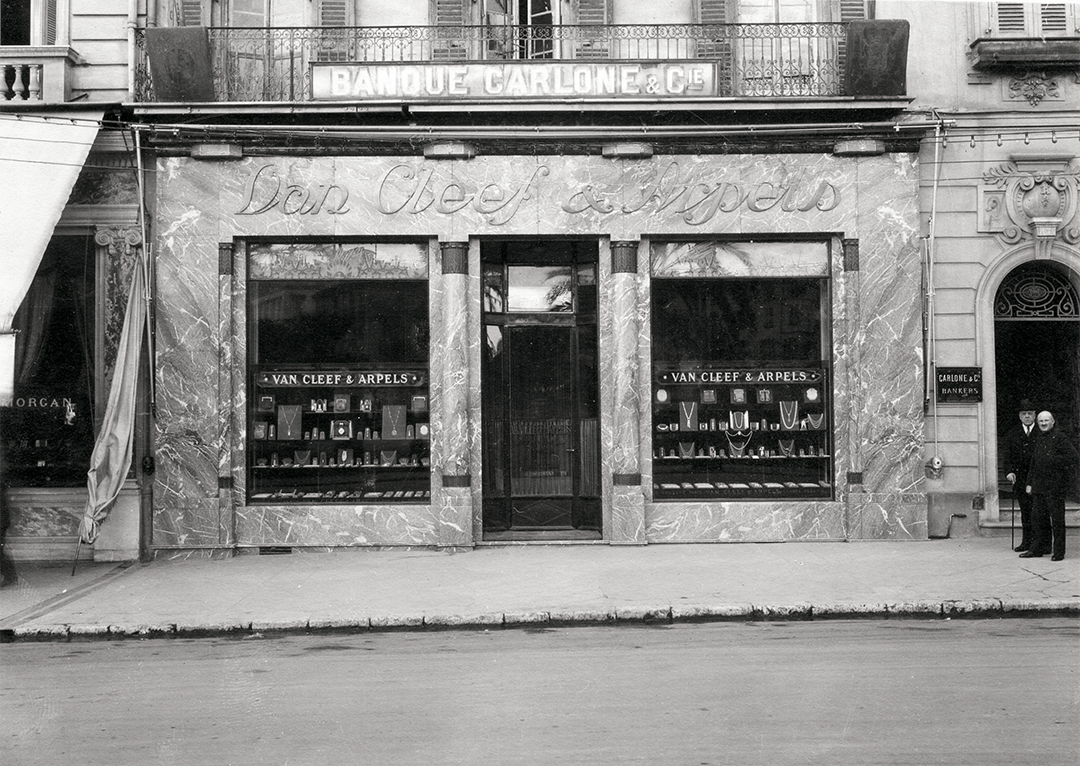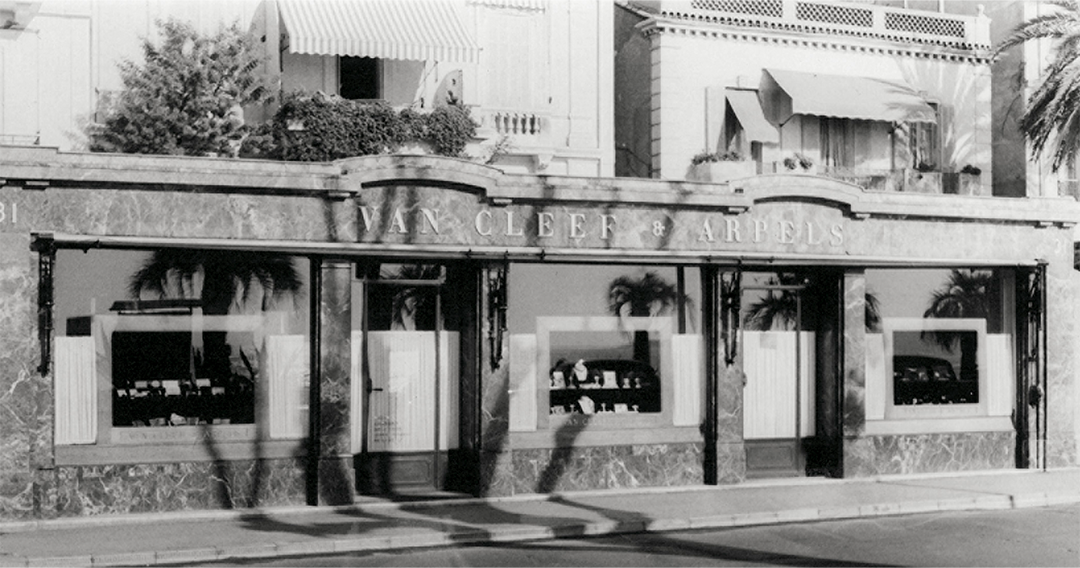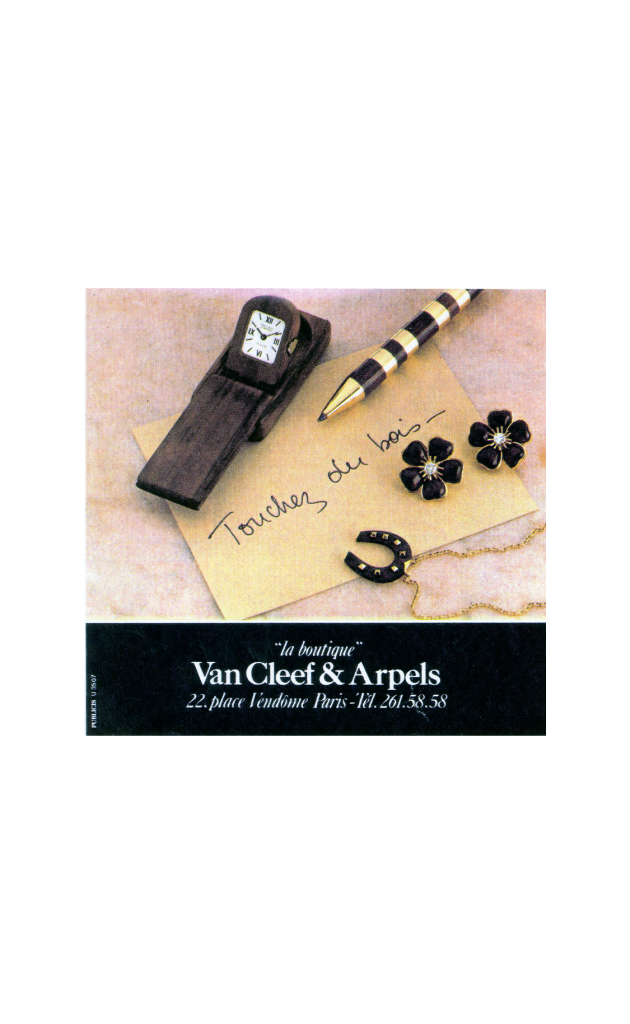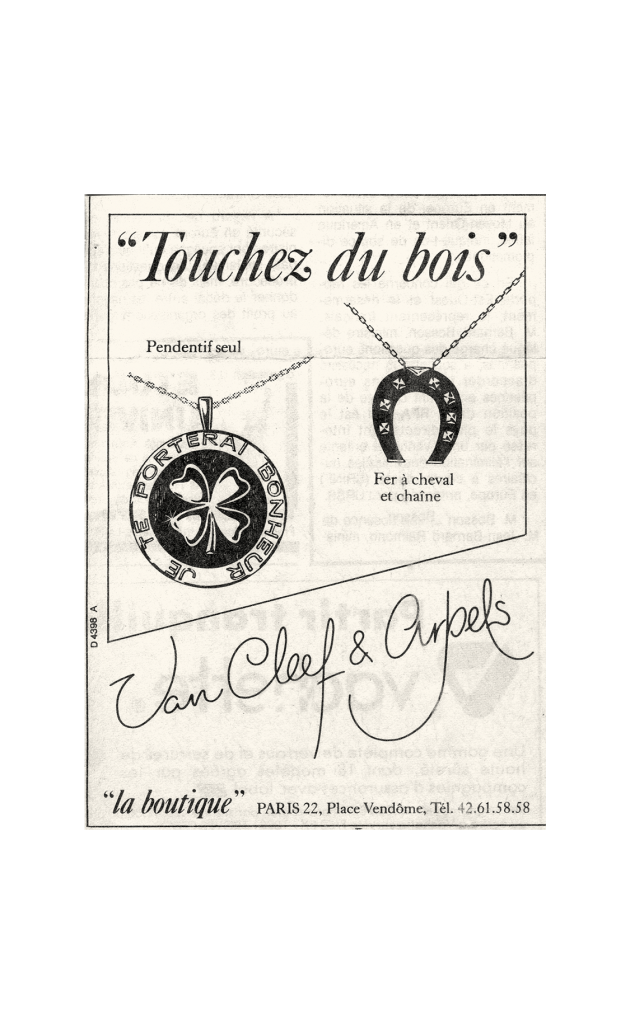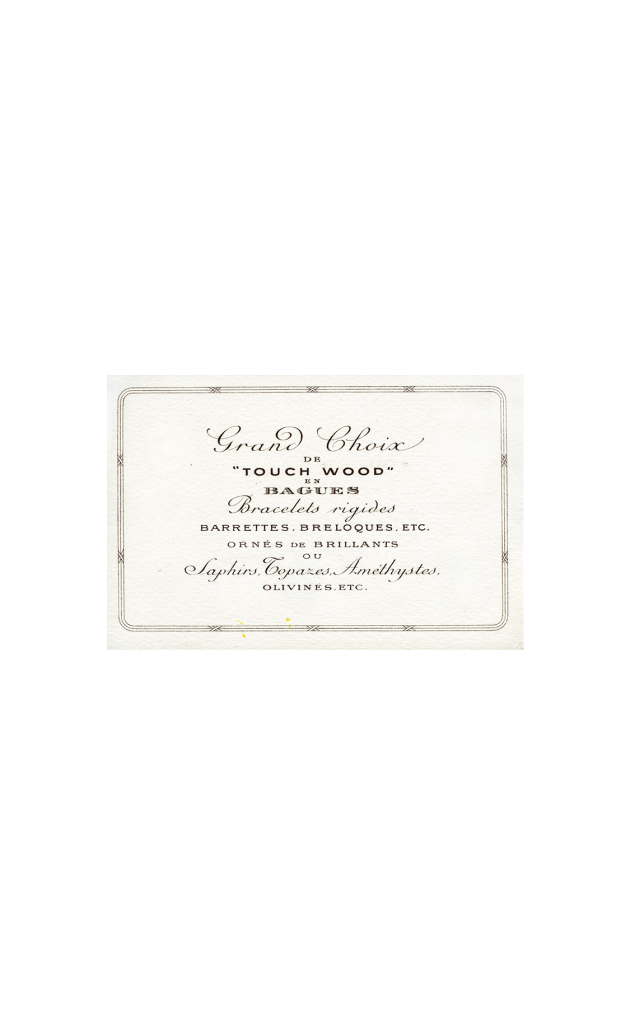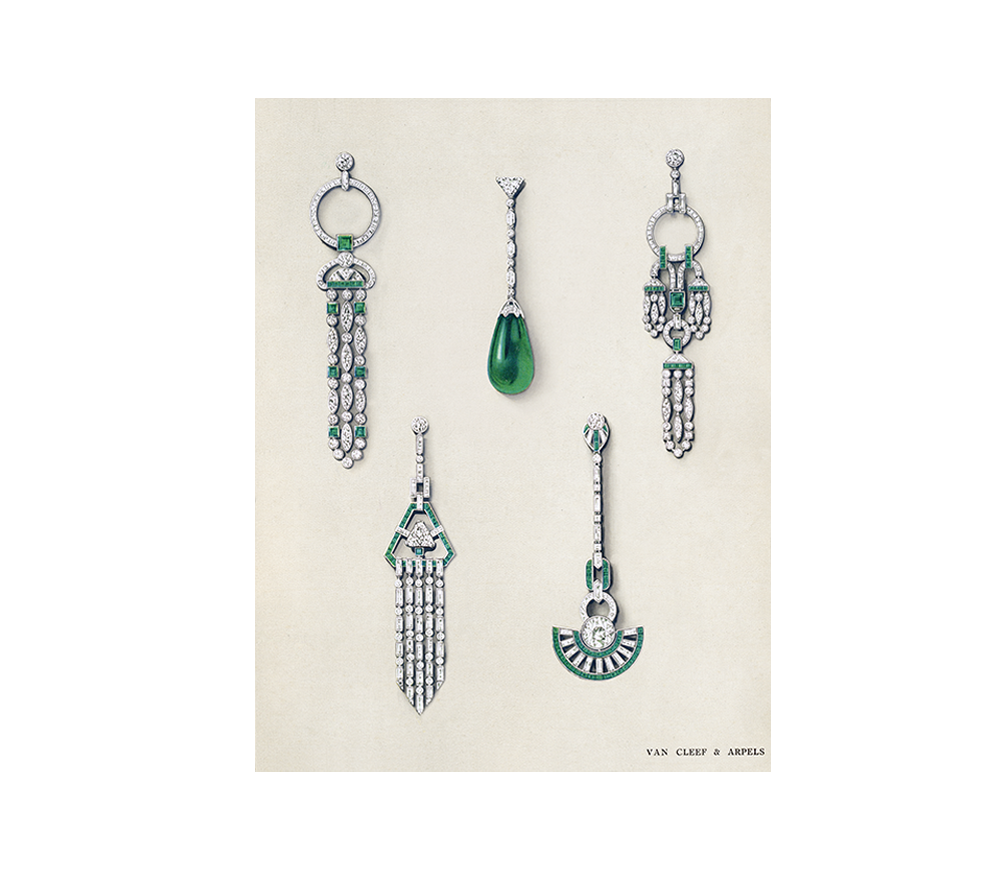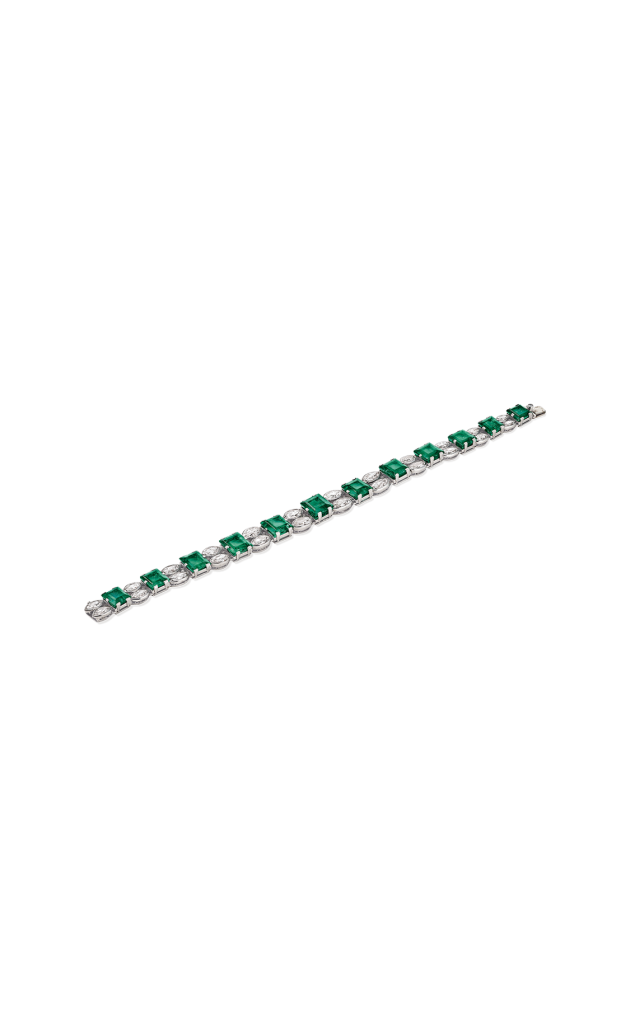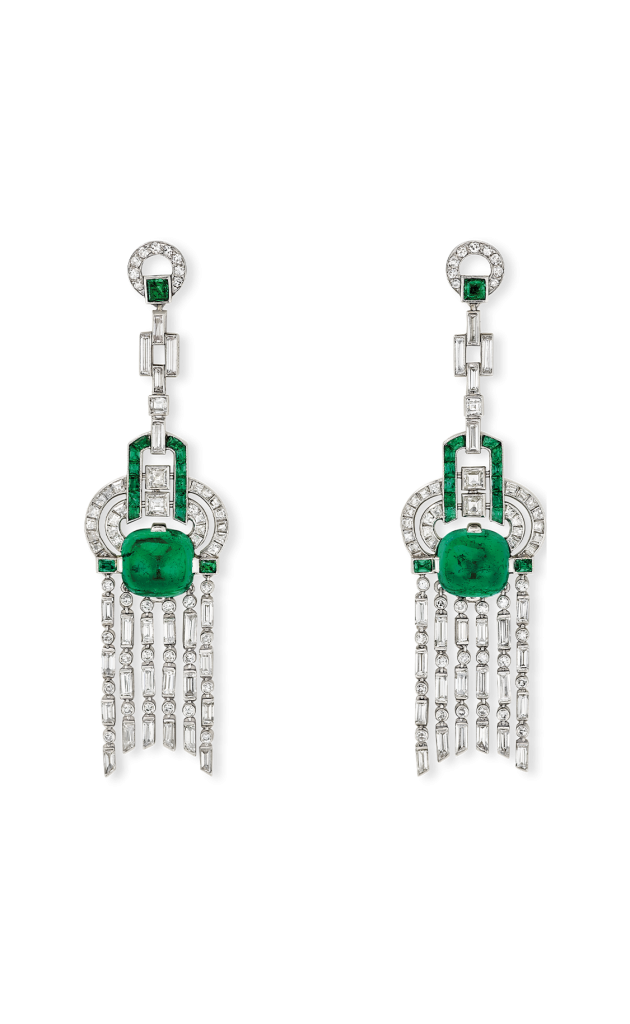The birth of the Maison Alfred Van Cleef & Salomon Arpels on February 10, 19061Company deed for “A. Van Cleef et S. Arpels,” February 10, 1906, Van Cleef & Arpels Archives, Paris. perfectly reflected the flourishing jewelry industries in Paris between the very end of the nineteenth century and the early twentieth century, led by members of well-established dynasties within the jewelry trade.
At that time, numerous “designer-producers”2Ministère du Commerce, de l’industrie, des postes et des télégraphes (French Ministry of Trade, Industry, Post, and Telegraphs)], Exposition internationale des arts décoratifs et industriels modernes, Paris 1925: Rapport général. Section artistique et technique, Parure (Classes 20 to 24), Vol. IX (Paris: Librairie Larousse, Paris, 1927), 87. Many of the major houses looked beyond their own workshops and designers to specialists—artists of great talent—who submitted drawings as well as executing them. were opening workshops in Paris, not far from the well-established jewelry houses. Among them were those of Alfred Van Cleef (1872–1938) and of his uncle, Léon Salomon Arpels (1846–1903), father of Salomon Arpels, known as Charles. The former established himself as a “retailer and maker of gold jewelry”3Annuaire-almanach du commerce, de l’industrie, de la magistrature et de l’administration, Bibliothèque historique de la Ville de Paris (classification number: V-11432), n.p. at 35 Rue Bellefond in 1896. That same year, the latter was listed at 43 Rue Drouot as a “gemstone and precious metal jeweler.”4Annuaire-almanach du commerce, de l’industrie, de la magistrature et de l’administration, Bibliothèque historique de la Ville de Paris (classification number: V-11432), n.p. The previous year, the marriage of Alfred Van Cleef and Esther Arpels (1877–1960), daughter of Léon Salomon Arpels and sister of Salomon Arpels, on 25 June 1895, strengthened the ties between these two families of “jewelry merchants.”5Alfred Van Cleef and Esther Arpels’ marriage certificate, June 25, 1895, Archives of the Ville de Paris (classification number: V4E8818). At the turn of the century, Alfred Van Cleef practiced the profession of “jeweler” at 28 boulevard Saint-Denis.6Anonymous, Paris-adresses : annuaire général de l’industrie et du commerce : corps constitués, administrations, professions libérales, propriétaires, rentiers, etc… de Paris et du département de la Seine (Paris: Ch. Alavoine et Cie, 1900), 716.
Opening of the place Vendôme store
In 1906, Alfred Van Cleef and Salomon Arpels opened a shop at 22 Place Vendôme7The company journal mentions, on page 70, “installation costs” for 22 Place Vendôme on June 13, 1906. Van Cleef & Arpels Archives, Paris.. Their choice of premises—one of the ground-floor arcades of the Hôtel de Ségur8The Hôtel de Ségur at 22 Place Vendôme was built by the architect Jacques Gabriel at the request of John Law from Lauriston. It was completed in 1720 and acquired by Nicolas Alexandre de Ségur in 1732.—was far from trifling, echoing the recent advent of shops representing the luxury industries to the area.
The inauguration of the prestigious Ritz Hotel on Place Vendôme in 1898 encouraged the existing neighboring establishments to carry out improvements. Such was the case for Le Meurice and the Grand Hôtel. The resulting comfort and luxury of these hotels, with their modern amenities, attracted and retained a wealthy clientele. They also helped to make the Place Vendôme famous, which, in turn, encouraged representatives of the jewelry arts to move there such as Boucheron, present since 1893 at 26 Place Vendôme, then René Lalique and Chaumet.
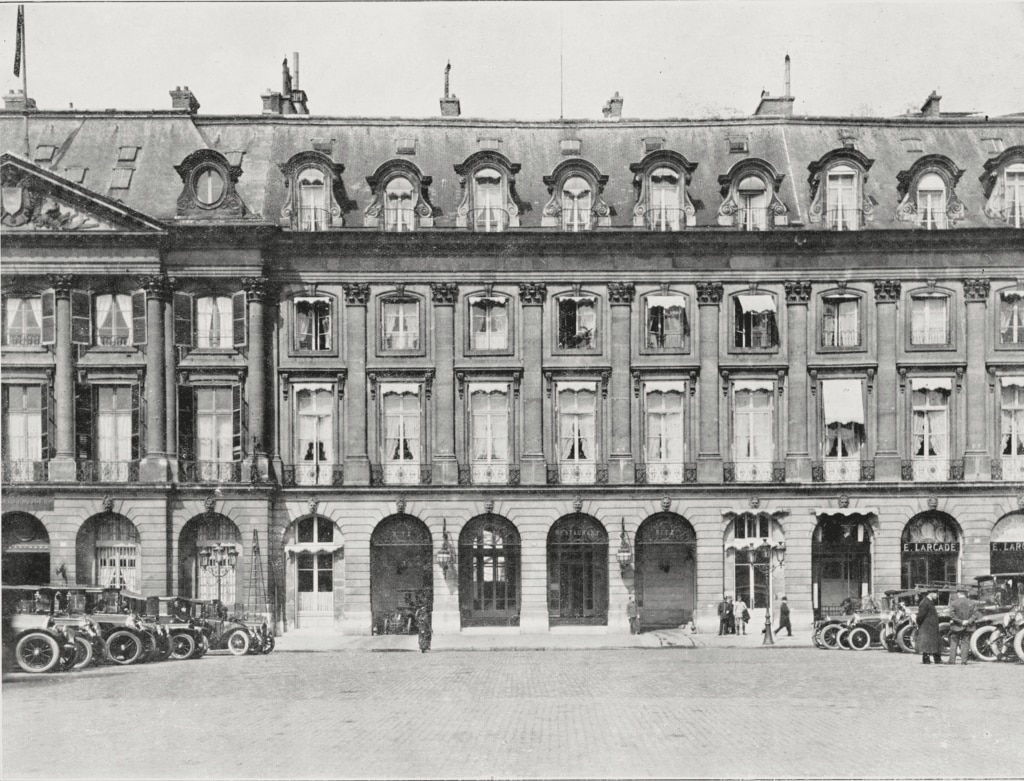
A prestigious and cosmopolitan clientele
In 1908, two members of the Arpels family joined the company: Jules (1884–1964)9Company deed for “A. Van Cleef & S. et J. Arpels,” August 4, 1908, Van Cleef & Arpels Archives, Paris. Also see: Archives commerciales de la France (December 8, 1909): 1950. and Louis (1886–1976)10Louis Arpels was not officially nominated by company deed until 1921, but his name features in association with the company’s activities from 1908 according to the journal kept by the Maison (p. 186). Van Cleef & Arpels Archives, Paris., both brothers of Salomon Arpels. The company’s name was changed to become “A. Van Cleef & S. et J. Arpels.”11Company deed, 1908. The clientele of the very young House is a reflection of the cosmopolitan elite residing or staying occasionally in Paris. It is mainly composed of the French nobility, members of the Russian and Egyptian royal courts. The addresses given in the client ledgers range from Europe to North America and South America.
The success of the pearls
The taste of the period was for white diamond jewelry and above all, pearls. When Alfred Van Cleef and Salomon Arpels moved to Place Vendôme, the pearl industry was thriving. The most popular requests included ones for solitaire rings, rivières of brilliants worn as necklaces or bracelets and rows of pearls. The gradual growth of the company was thus based on the “trade of [unmounted] pearls and precious stones” and the sale of traditional forms of jewelry that, while precious, were of no real artistic value.
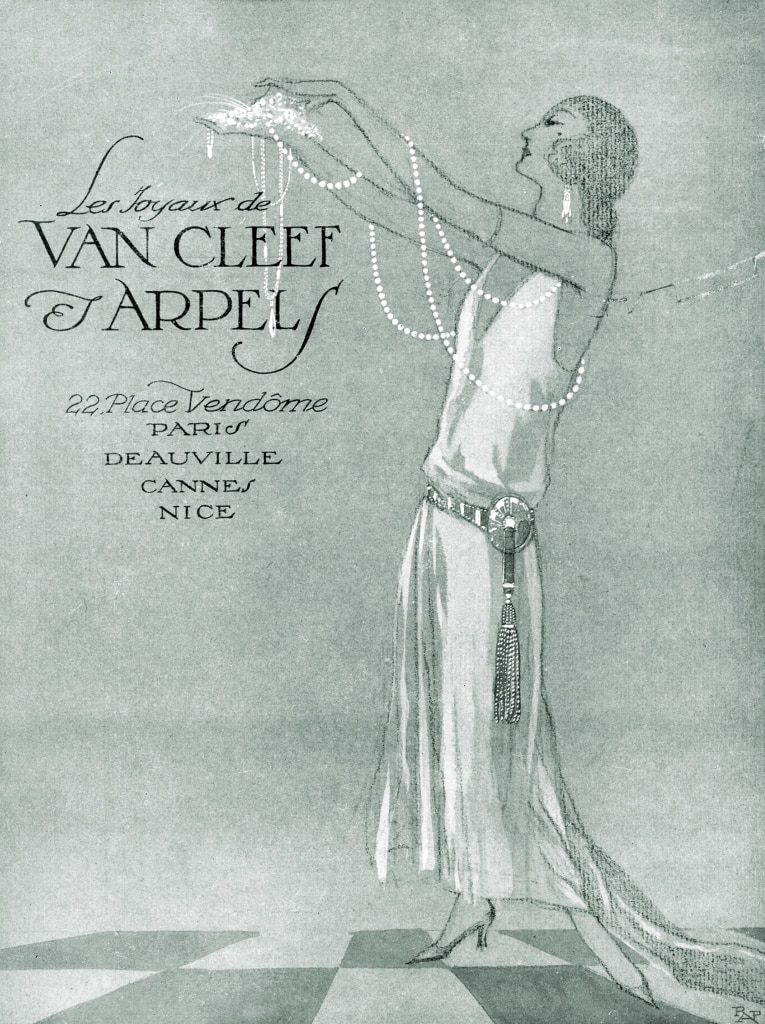
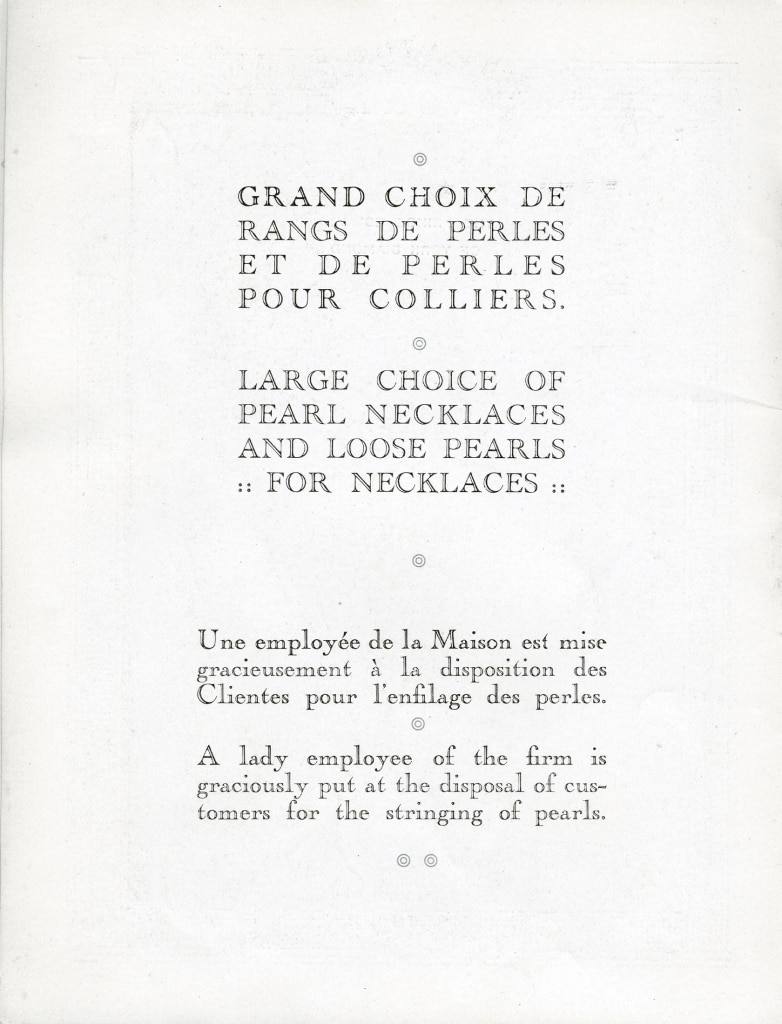
Spa towns : a strategic place for shops
Other branches that were equally strategically located were soon added to this initial Place Vendôme address. In keeping with the vogue for sea bathing and thermal cures, Van Cleef & Arpels chose seaside resorts and spas with railway services for its seasonal outlets. Shops were thus opened in Dinard in 190912Le Salut, no. 98 (7 and 8 December 1909): n.p., Nice in 191013The Maison’s account books mention for the first time general expenses for Nice in November 1910, then fitting out expenses in December of the same year. The inventory drawn up on January 15, 1911 mentions fitting out costs in Nice “to bring the store into working order.” Account book, Van Cleef & Arpels Archives, Paris., Deauville in 191214The inventory drawn up on October 31, 1912 mentions layout costs “for a store […] rue Gontaut-Biron” in Deauville. Account book, Van Cleef & Arpels Archives, Paris., Vichy in 191315The inventory drawn up on October 31, 1913 mentions fitting out costs for a business in Vichy. Account book, Van Cleef & Arpels Archives, Paris., and lastly, Cannes, in 192116Registre analytique complémentaire mentioning the entry of Van Cleef & Arpels, Archives de Paris, D33U3 1897..
Magnificent villas cropped up in these resorts17J.R.F. “Les villes de cures ou de repos sont, en France, cités bénies des dieux” [Seaside and Thermal Spa Towns in France Are Places Blessed by the Gods], Vogue Paris (August 1924): 3–5, 62, and 64., such as Villa Daisy in Dinard and La Favorite in Cannes, where French and foreign aristocracy resided, as well as various casinos and luxury hotels like the Normandie in Deauville and the Majestic in Nice.
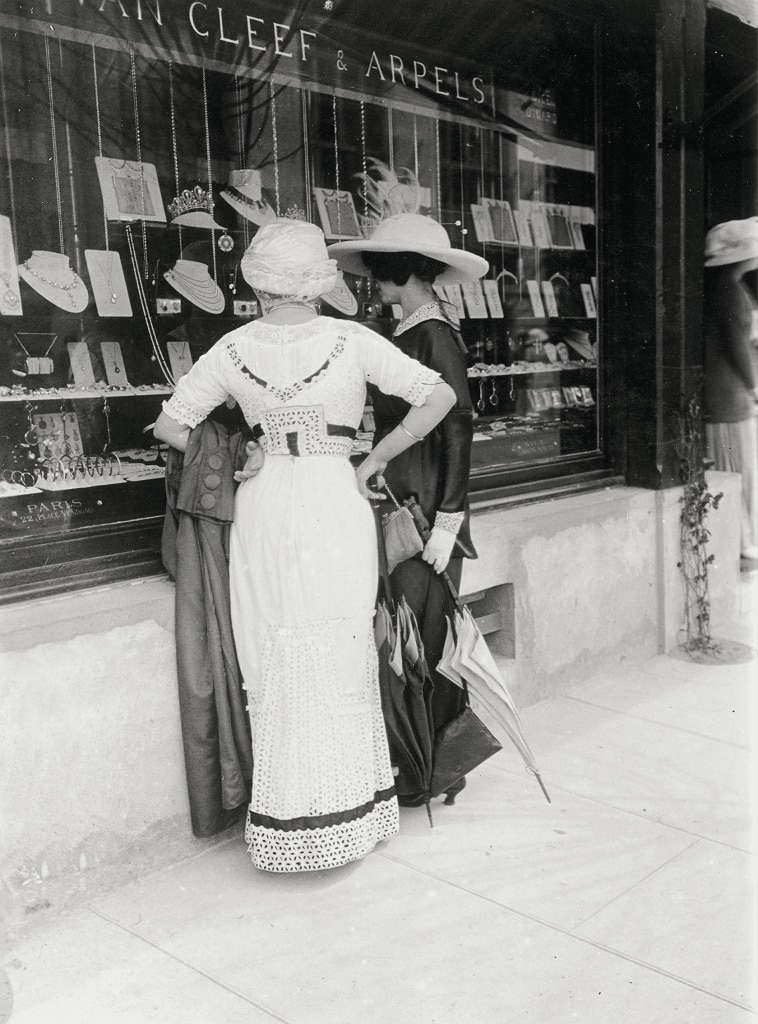
World War I
This rapid expansion was nonetheless suspended with the outbreak of war in the summer of 1914. Members of the Van Cleef and Arpels families were called up18Charles Arpels was enlisted from February 1915 to March 1917. His Légion d’honneur award, in the name of Salomon Arpels, figures in the Archives nationales, Pierrefitte-sur-Seine (classification number: 19800035/714/81372 or enlisted voluntarily19Louis Arpels, who “enlisted voluntarily for the duration of the War in the 85th Field Artillery Regiment [85e Régiment d’artillerie de campagne],” is cited in Verdun, then decommissioned at the end of the War for “gas intoxication.” Louis Léon Arpels’ Légion d’honneur award features in the Archives nationales, Pierrefitte-sur-Seine (classification number: 19800035/1399/61660).. Only Alfred Van Cleef appears to have remained in Paris, having been assigned to the auxiliary service before being “decommissioned […] for serious illness while on duty.”20Alfred Van Cleef’s Légion d’honneur award features in the Archives nationales, Pierrefitte-sur-Seine (classification number: 19800035/1339/55176). His wife, Esther Arpels, worked as a “head nurse.”21Anonymous, “Les Décorées”, La Française (May 7, 1921): 4.
THE “TOUCH WOOD” COLLECTION
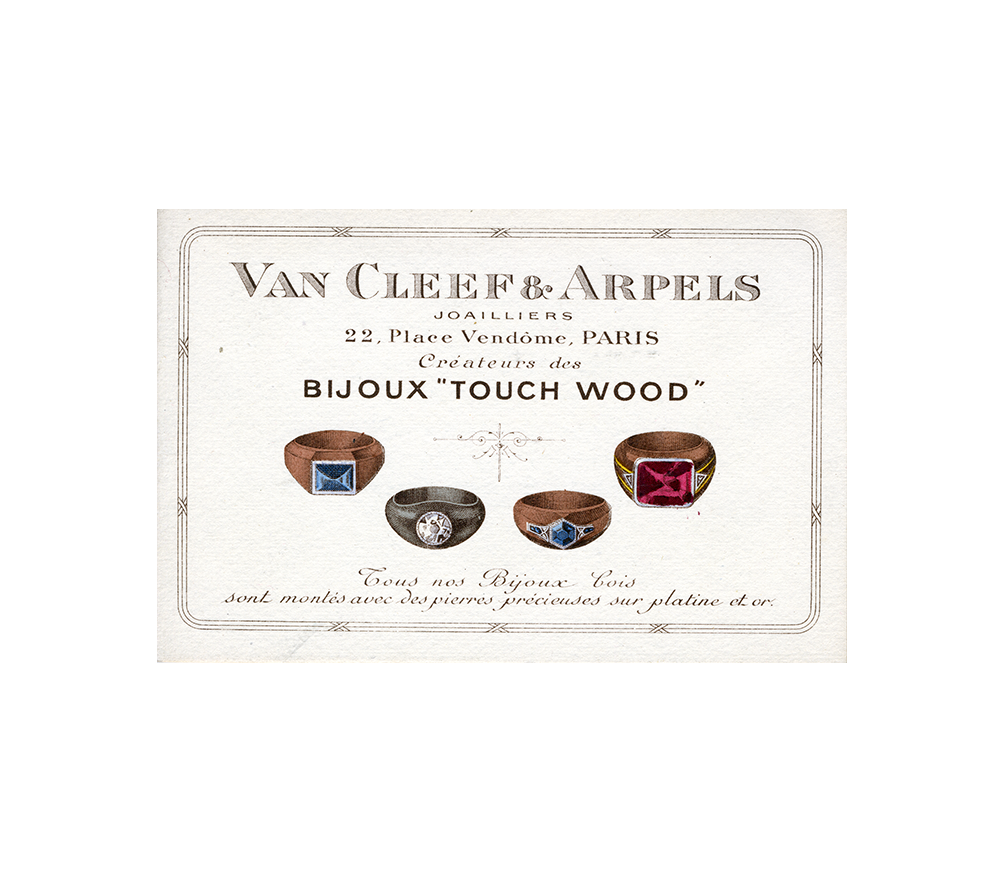
The context of the First World War gave rise to a jewelry ensemble whose inventiveness, material homogeneity and marketing methods qualify it as the Maison’s first “collection.” Its wooden rings and bracelets, marketed under the name of “Touch Wood” (in reference to the popular belief whereby touching wood wards off bad luck) were extremely popular and its use of cheaper materials and association with good luck were entirely in keeping with the austerity of wartime, conducive to superstition. This was the first time a proper advertising campaign was used for a collection.
A deep change after the war
In the wake of the First World War, the Maison underwent a major change that contributed to its rapid development during the 1920s. This development coincided with Émile Puissant (1891–1926), husband of Renée Van Cleef (1896–1942) joining the company. Émile Puissant “was put in charge of the Maison’s general management.”22René Sim Lacaze, “Ce siècle avait un an”, [s.l.] (1994): 72. “He had very reliable taste and helped his father-in-law with the selection of designs to be made for the Maison’s stock.”23René Sim Lacaze, “Ce siècle avait un an”, [s.l.] (1994): 72. He was assisted by the designer René Sim Lacaze who he recruited in 192324René Sim Lacaze, “Ce siècle avait un an”, [s.l.] (1994): 72.. It was probably he who encouraged the Maison’s artistic direction to pursue and expand the creation of groups of jewelry that were developed and marketed as collections. After the Touch Wood collection, there was the “onyx-emerald-diamond” jewelry collection.
Van Cleef & Arpels also began to call upon the savoir-faire workshops in order to give esthetic momentum to its production. One of the most successful collaborations was with the Mirra workshop25See Rémi Verlet, Dictionnaire des joailliers, bijoutiers et orfèvres en France de 1850 à nos jours (Paris: Gallimard, 2022), 1617., which, after 1918, mainly produced white diamond jewelry, technical elements such as clasps for necklaces and purses, and precious objects like card-holders and cigarette-holders, before making a name for itself producing hatpins and brooches with various bird species in platinum and diamonds.
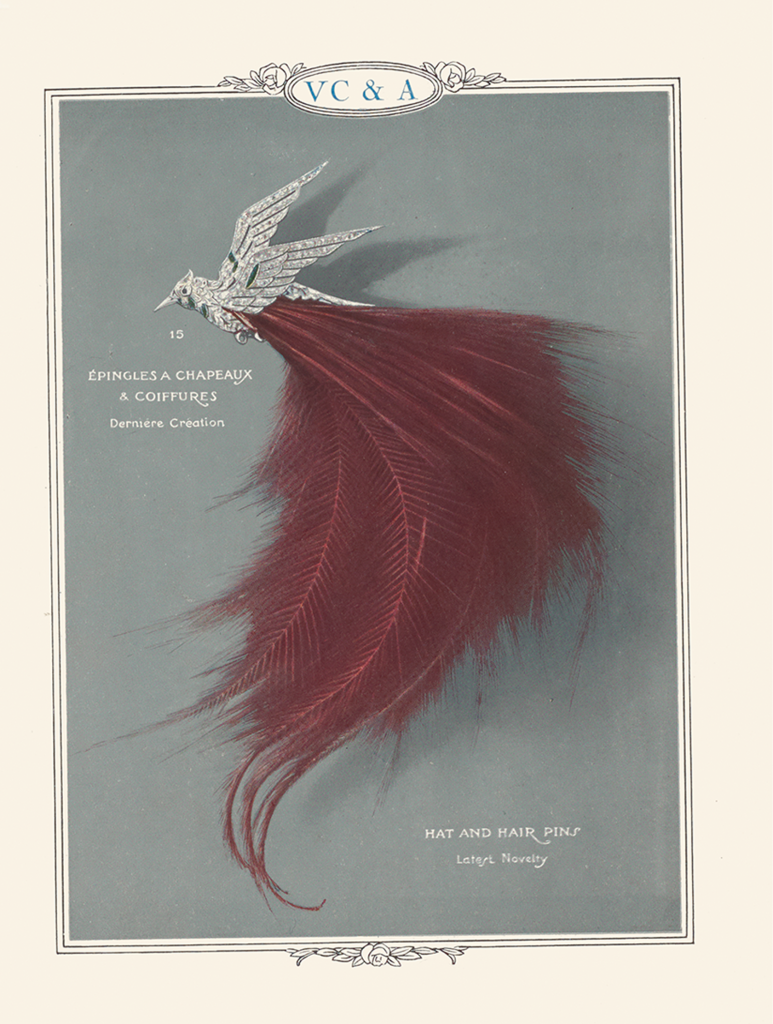
After 1920, the Maison expanded its network of collaborators considerably: Rubel handled the lapidary and high jewelry work; Verger Frères26Verlet, Dictionnaire des joailliers, 2275–2276. the watchmaking; Lenfant27Verlet, Dictionnaire des joailliers, 1404–1405. was renowned for its chain production; Strauss Allard Meyer28Verlet, Dictionnaire des joailliers, 2151–2152. and Langlois29Verlet, Dictionnaire des joailliers, 1317–1318. shared the creation of nécessaires and cigarette boxes, while Desmarès30Verlet, Dictionnaire des joailliers, 721. was in charge of powder compacts.
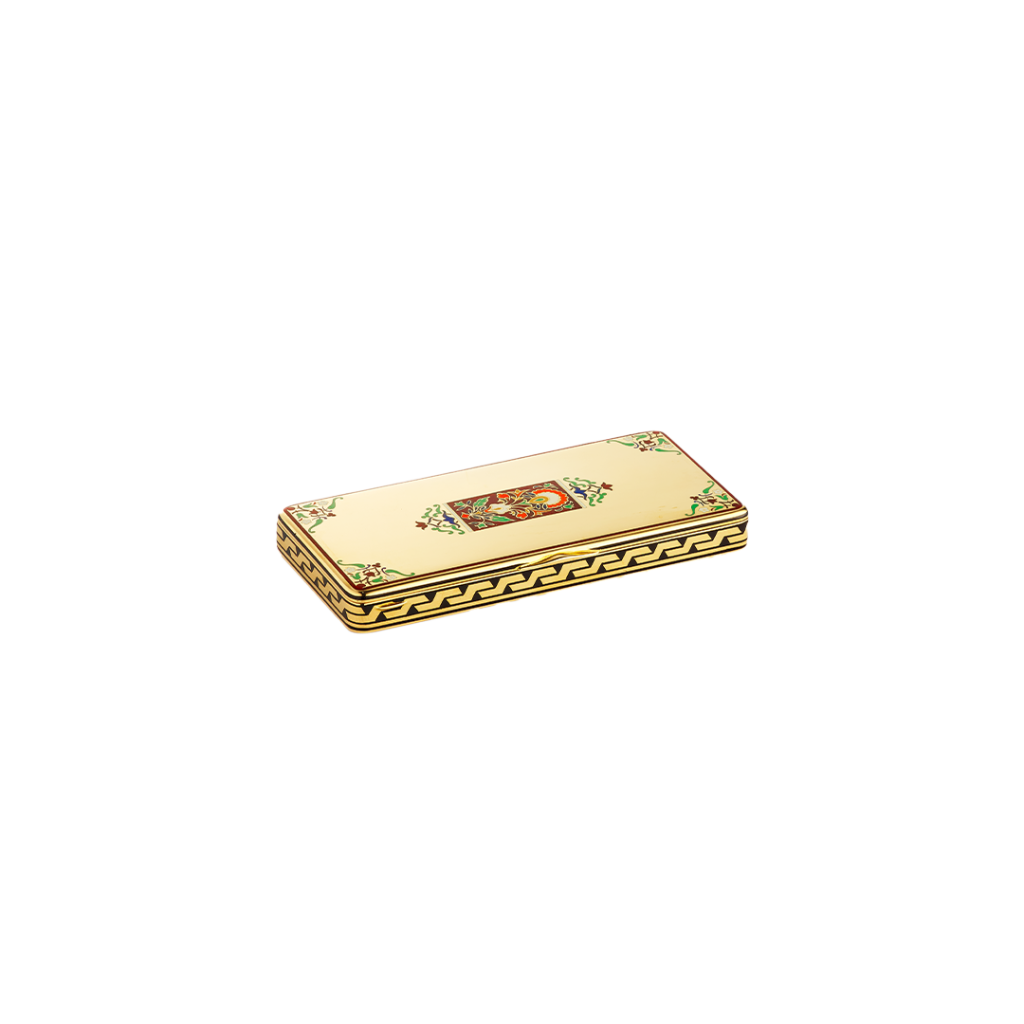
Special sales and participations to exhibitions
This creative burgeoning led to the need for heightening the firm’s visibility. To this end, Émile Puissant, “the brilliant instigator”31Lacaze, “Ce siècle avait un an,” 72. came up with a novel marketing ploy. From December 5 to 31, 1921, the first “special sale” was held in the shop at 22 Place Vendôme. This type of marketing event, “reserved for private clients”32Anonymous, “Un joli choix de bijoux,” Excelsior (December 6, 1921): 4. and accompanied by catalogs, enabled older, “slightly passé”33Lacaze, “Ce siècle avait un an,” 73. pieces of jewelry to be sold at low prices while “the latest novelties and creations were also presented.”34Anonymous, “Un joli choix de bijoux,” 4. This sales strategy was a major factor in establishing Van Cleef & Arpels’ reputation in Paris, and was an annual event until 192735See: Figaro (December 15, 1922), 1; Figaro (December 29, 1923), 1; Figaro (December 9, 1924), 1; Figaro, (December 17, 1925), 1; Figaro (December 23, 1926), 1; Figaro (December 15, 1927), 1., after which it continued more intermittently until 195036Special Sale catalog (Paris: Van Cleef & Arpels Archives, 1950)..
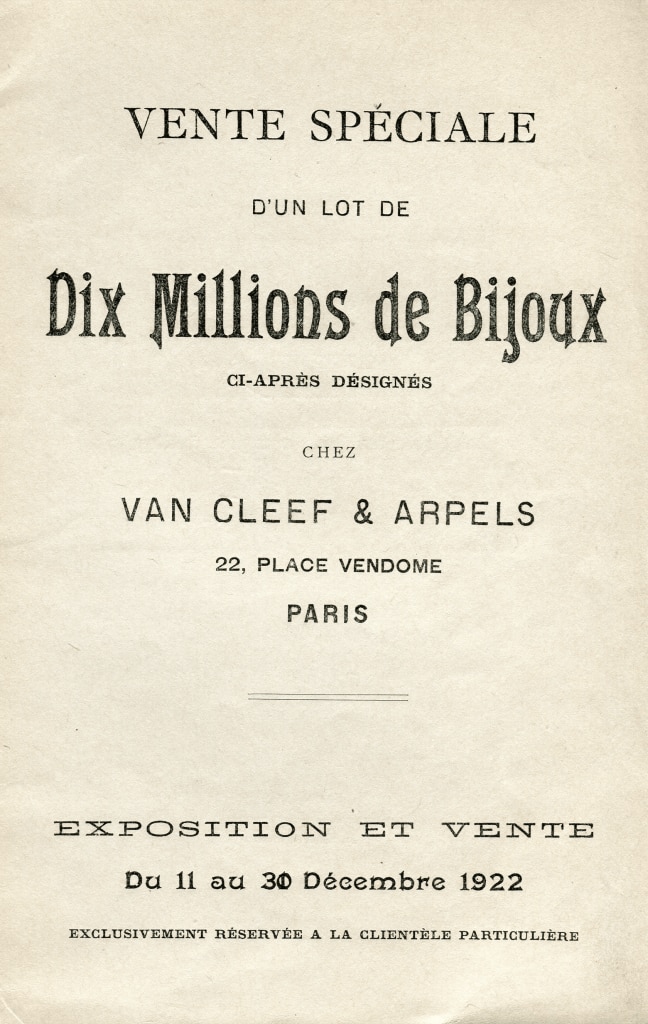
The Maison’s presence in numerous salons and exhibitions in France and abroad, such as the Expositions Universelles, provided it with lasting recognition. From 1921, Van Cleef & Arpels exhibited in the Salon du goût français37Program for the Salon du goût français (Salon of French taste) in Paris, 1921., an annual event that aimed to “let the latest creations of […] art manufacturers be admired.”38Anonymous, “Au palais de glace, le Salon du goût français,” Excelsior (June 10, 1923): 2. For the 1923 Salon, the Maison presented “some delightful watch-bracelets”39Anonymous, “Au palais de glace, le Salon du goût français,” Excelsior (June 10, 1923): 2.. The following year, Van Cleef & Arpels made its first transatlantic incursion, as a non-competing participant in the Exposition française organized in New York at the Grand Central Palace. “The Van Cleef & Arpels stand” there was noted for “the famous Prince of York diamond,” a gem in “excess of sixty carats”40Anonymous, “Famous Gem on Show,” The New York Times (April 25, 1924): 5. that had already been displayed in Paris in the shop window at 22 Place Vendôme during the 1921 “special sale.”41Anonymous, “Des diamants magnétiques,” Excelsior (December 26, 1921): n.p.
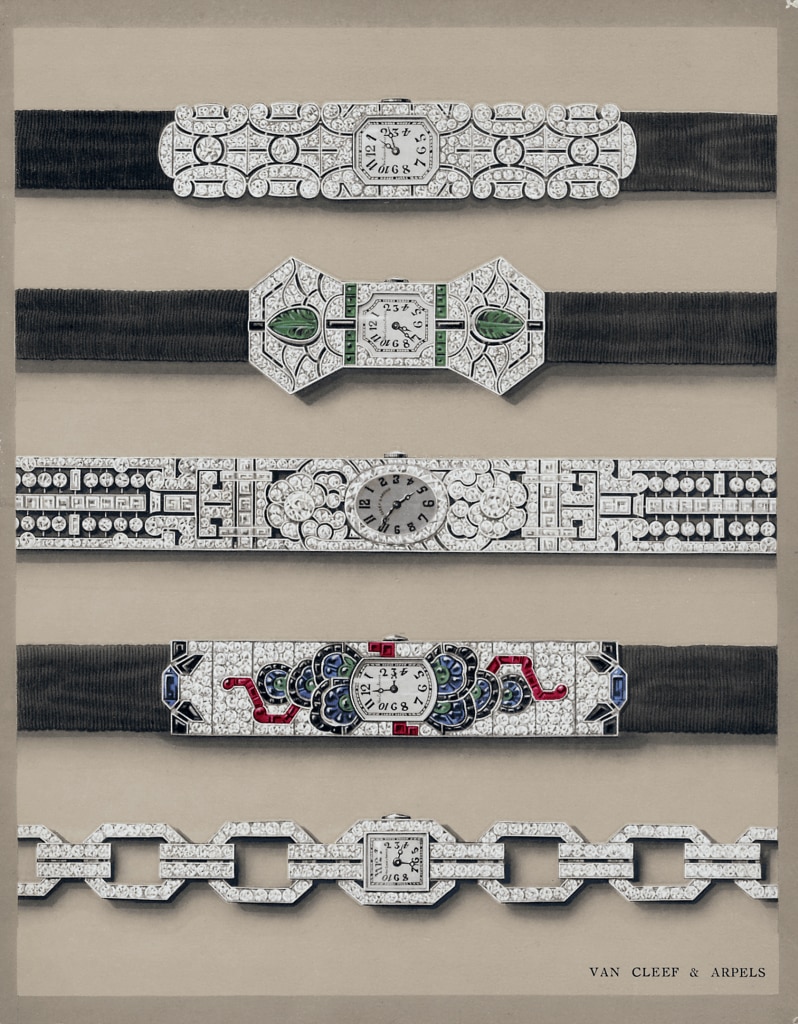
International influence
1925 marked the culmination of the Maison’s efforts to boost its visibility, undertaken since the start of the decade, with its first official participation in an international event, namely the Exposition internationale des arts décoratifs et industriels modernes, for which it was awarded a Grand Prix. Sanctioning the French decorative arts and the style posthumously referred to as Art Deco, the exhibition also served to reinforce their “widespread diffusion overseas.”
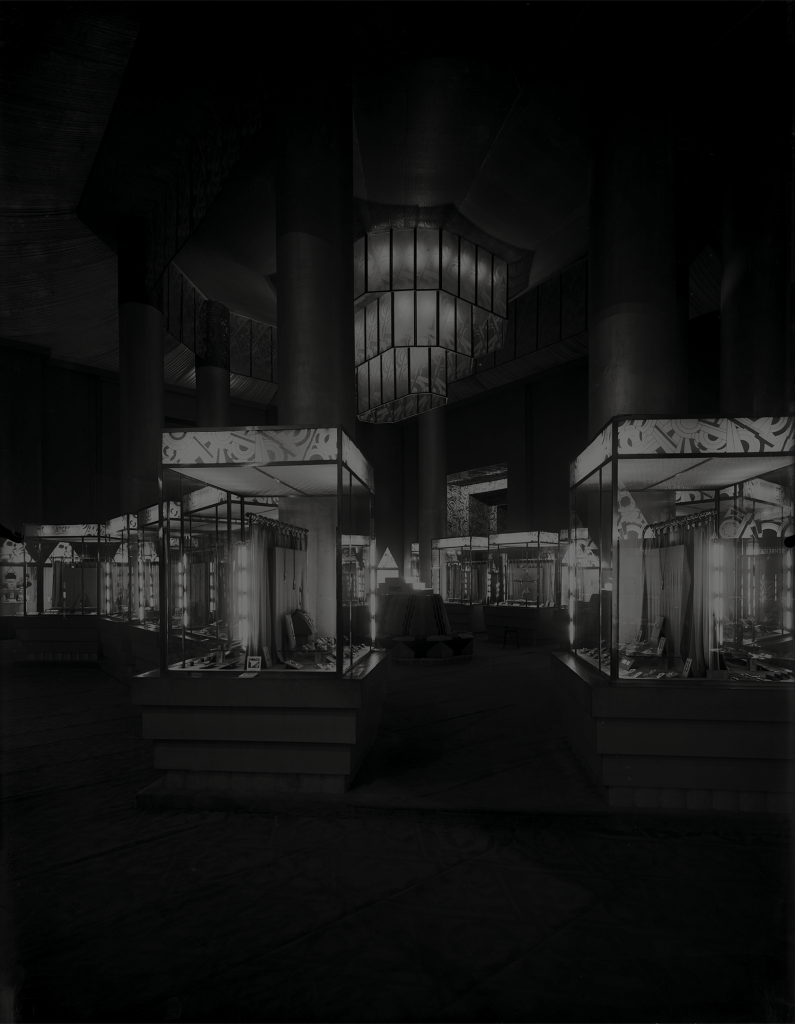
Van Cleef & Arpels had a turnover of thirty-two million francs, fourteen million of which were exports, which made it “one of the most important French firms […] particularly appreciated abroad.”42Alfred Van Cleef’s Légion d’honneur award features in the Archives nationales, Pierrefitte-sur-Seine (classification number: 19800035/1339/55176). Its clientele continued to grow and by 1923, the Maison could justifiably boast of being the official “supplier to the Courts of England, Spain, Denmark, Persia, Portugal and […] the [maharajahs of] India.”43Alfred Van Cleef’s Légion d’honneur award features in the Archives nationales, Pierrefitte-sur-Seine (classification number: 19800035/1339/55176). From then on, armed with its ever-growing reputation, the Maison focused on setting up branches in places where its clientele resided, to acquire international exposure.
